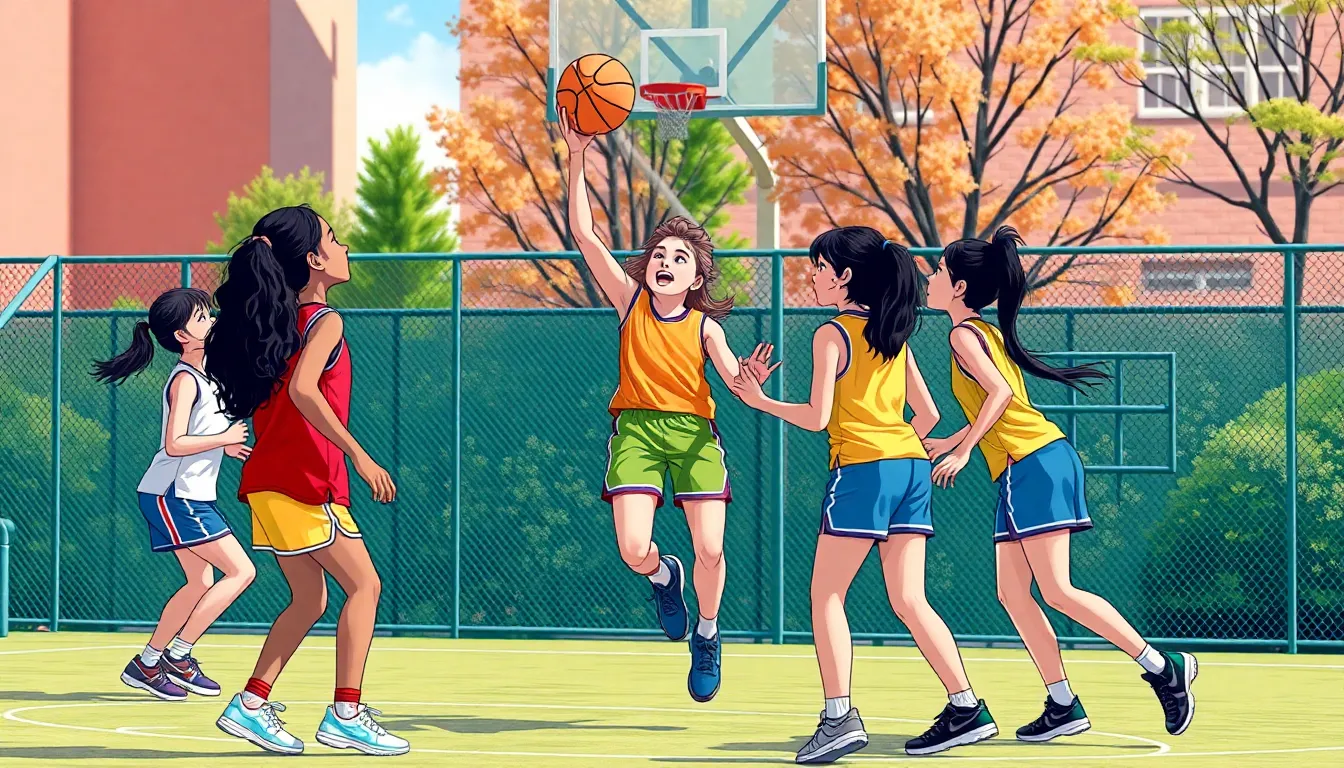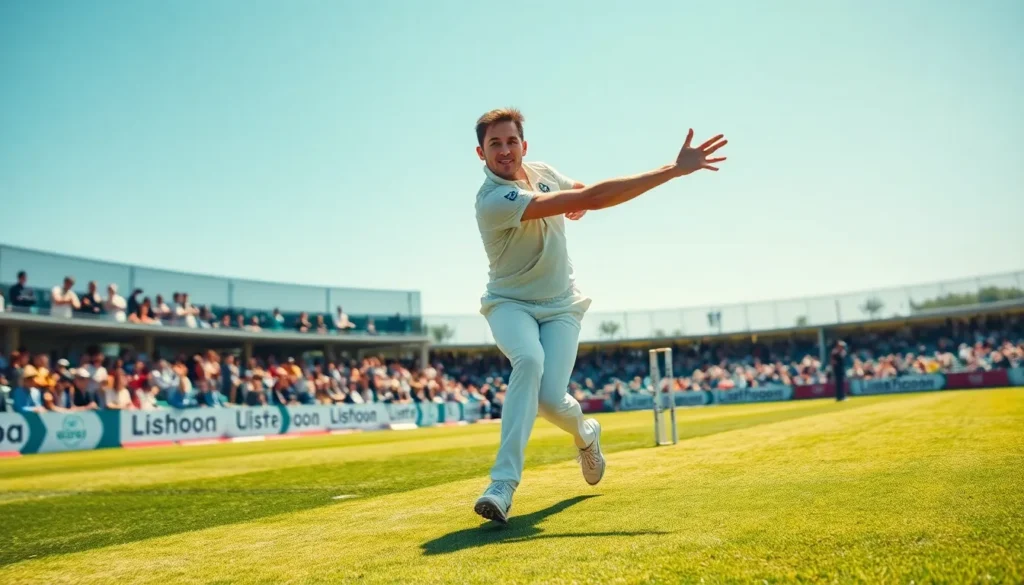Table of Contents
ToggleIn a world where every girl deserves a shot at greatness, the landscape of sports opportunities is evolving faster than a sprinter at the starting line. Gone are the days when athletic dreams were reserved for boys; today, girls are breaking barriers, smashing records, and redefining what it means to be a champion. From soccer fields to basketball courts, the rise of girls’ sports is not just a trend—it’s a movement.
Overview of Girls Sports Opportunities
Girls now experience a wide range of sports opportunities across various levels, from youth programs to professional leagues. National participation in high school sports by girls reached 3.4 million in 2020, showcasing remarkable growth since the implementation of Title IX in 1972. This legislation has played a crucial role in promoting gender equity in athletics.
Scholarships for female athletes continue to expand, with numerous colleges and universities offering financial aid to support their education and athletic ambitions. NCAA Division I schools provide more than 10,000 scholarships specifically for women’s sports, emphasizing the importance of female participation in competitive settings.
Community organizations actively promote girls’ involvement in sports, offering programs aimed at increasing self-esteem and teamwork skills. Initiatives like Girls on the Run engage young girls in physical activities while focusing on personal growth and empowerment.
Additionally, professional female athletes serve as role models, inspiring the next generation to pursue their athletic dreams. Stars like Serena Williams and Megan Rapinoe advocate for equality, elevating awareness of gender issues in sports. Their success stories help shape the perception that girls can excel in any sport, breaking traditional stereotypes.
Girls’ participation spans various disciplines, including soccer, basketball, and track and field. Each sport provides unique benefits that contribute to physical and mental well-being. According to the Women’s Sports Foundation, girls who play sports demonstrate increased confidence, improved academic performance, and better social skills.
The landscape of sports opportunities for girls grows rapidly, with extensive participation, support from institutions, and positive societal influences fostering a culture that celebrates female athletes.
Historical Context

Girls sports opportunities have undergone significant transformations over the decades. The journey towards gender equity in athletics began well before Title IX, paving the way for today’s expanding array of sports options.
Early Development of Girls Sports
Early organized sports for girls emerged in the late 19th and early 20th centuries. Tennis and basketball gained popularity, with schools beginning to offer physical education programs for girls. Limited opportunities existed in these early years, often focused on how sports could maintain femininity rather than encourage competition. The first girls’ interscholastic teams formed around the 1970s, which signaled the start of significant progress. Participation in physical activities gradually rose, enabling girls to compete in various sports from basketball to field hockey.
Milestones in Legislation
Legislation has played a crucial role in advancing girls sports. Title IX, enacted in 1972, mandates gender equality in federally funded education programs. This landmark law revolutionized female participation in athletics. Since its implementation, the number of girls participating in high school sports soared to 3.4 million by 2020. Additionally, the law led to increased funding for women’s sports programs. Other legislative measures, such as the Women’s Sports Foundation’s advocacy efforts, further emphasize the importance of equity in sports, supporting athletic programs that foster girls’ involvement across all levels.
Current Landscape
The landscape of sports opportunities for girls is evolving rapidly. Increased participation and support have transformed the athletic experience.
Popular Sports Among Girls
Sports like soccer, basketball, and track and field gain immense popularity among girls, often leading in participation rates. Soccer ranks as the most played female sport at the youth level, reflecting its accessibility and growing fan base. Basketball follows closely, featuring numerous leagues and high school teams dedicated to female athletes. Track and field events attract many participants due to their variety and inclusivity. Girls also find engagement in sports like gymnastics and volleyball, demonstrating versatility in athletic interests.
Participation Rates and Trends
Participation rates for girls in high school sports hit 3.4 million in 2020, marking a notable increase since Title IX’s implementation in 1972. This legislation significantly influenced girls’ involvement, fostering an environment where female athletes thrive. School programs effectively encourage engagement and development in various sports. Community initiatives, along with collegiate scholarships for women’s sports, further enhance participation. Girls who play sports often report higher confidence, better academic performance, and improved social skills, backing the importance of athletics in their lives.
Barriers to Participation
Various barriers still exist that hinder girls from fully participating in sports. These obstacles influence interest, access, and sustained involvement in athletic activities.
Societal Attitudes
Societal attitudes towards gender roles significantly impact girls’ sports participation. Many communities still prioritize traditional views, discouraging girls from competing at certain levels. Negative stereotypes about femininity can undermine their confidence and discourage them from pursuing sports. Research shows that girls exposed to supportive environments often thrive, while those facing skepticism tend to withdraw. Encouragement from parents and peers plays a crucial role in shaping perceptions of girls in sports.
Access to Resources
Access to resources remains a critical barrier for girls in sports. Limited funding for women’s athletic programs often results in fewer opportunities at schools and community centers. Many girls don’t receive adequate training facilities, equipment, or coaching, leading to disparities in skill development. Geographic location can also limit access, especially in rural areas where sports programs are often underfunded. Efforts to improve resource distribution have increased, but gaps still exist which need addressing to ensure equal opportunities for all female athletes.
Benefits of Participation
Participation in sports offers numerous advantages for girls, positively influencing their physical, emotional, and social well-being. Engaging in athletics cultivates various essential skills and promotes overall health.
Physical Health Benefits
Engaging in sports significantly enhances physical health. Exercise helps maintain a healthy weight, reduces the risk of chronic illnesses, and encourages a lifelong appreciation for fitness. Girls who participate in athletics often build muscle strength and improve cardiovascular endurance. Studies indicate that active females experience lower rates of obesity, which can positively influence their overall health. Additionally, participation fosters healthy lifestyle choices. Girls who exercise regularly are less likely to engage in smoking or substance abuse, establishing habits that extend beyond their sports careers.
Emotional and Social Benefits
Involvement in sports also nurtures emotional and social development. Participation boosts self-esteem and instills a sense of achievement. Girls involved in athletics frequently develop resilience when facing challenges. Socially, sports provide opportunities to build friendships and teamwork skills, fostering connections that last beyond the playing field. Research shows that girls who play sports report higher levels of happiness and well-being. Leadership skills often emerge through participation, empowering young women to take initiative in various areas of life. Overall, the emotional and social advantages of sports participation significantly contribute to the holistic development of girls.
The landscape of sports opportunities for girls continues to flourish, reflecting a significant shift towards inclusivity and equality. As more girls engage in athletics, they not only break barriers but also cultivate essential life skills that extend beyond the playing field.
The impact of participation in sports is profound, enhancing physical health and fostering emotional resilience. With increased visibility of female athletes and supportive community programs, girls are inspired to pursue their passions.
While challenges remain, ongoing efforts to address these barriers will pave the way for future generations. The journey toward equal opportunities in sports is vital in shaping confident young women ready to excel in all areas of life.










